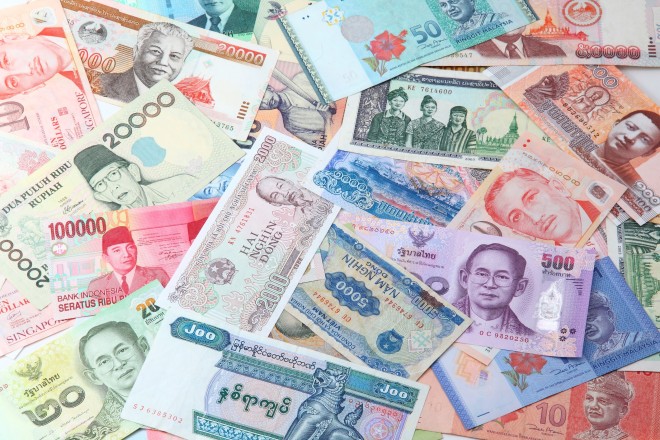
2. Reclassify goods for Asean trade

[Sponsored Article]
The United States-China trade war is continuing to intensify with drastic consequences.
The International Monetary Fund, for instance, has warned of a 0.5 per cent reduction in global output by 2020 because of tariffs between the two countries. This translates to a loss of about US$455 billion in gross domestic product, and both investors and consumers are likely to turn cautious as a result.
In Hong Kong, businesses can expect less spending from an anxious domestic population, as well as possible liquidity crunches as banks turn risk-averse.
Local confidence in economic development dipped by 17.5 per cent from Q4 2017 to Q4 2018, while consumer confidence fell below an index level of 100 in January 2019, indicating pessimism. Therefore, It would be imprudent to count on an early resolution to the trade dispute and its negative effects on business, given the deadlock between the two countries.
A more practical strategy could be for Hong Kong businesses to turn their attention to the 10-member Association of Southeast Asian Nations (Asean) region, or the Guangdong-Hong Kong-Macau Greater Bay Area (GBA).
The region provides sustainable new business opportunities, mainly for two reasons.
First, Asean is a sizeable region with an estimated total population of 622 million. It counts 67 million households as part of its “consuming class” – a number that is expected to almost double by 2025. This provides a larger base of customers compared with Hong Kong’s small domestic market.
Some Asean countries are less directly intertwined in the US-China showdown, which means consumers there may not have adopted the same cautious outlook.
Second, Asean as a whole has moved in the opposite direction to the US and China. Even as the US turns protectionist, Aseannations have committed to lowering trade barriers.
Under Asean Vision 2020, free trade between its member-nations is expected to accelerate. Hong Kong businesses are in an excellent geographical position to capitalise on this, given that many Asean states also see the Chinese special administrative region as a financial hub and as the gateway to mainland China.
Benefits of cross-border growth
As the risks of the trade war intensify, Hong Kong businesses, especially small and medium-sized enterprises (SMEs), would benefit from expanding into new markets. Now is a good time to consider expansion into Asean and the GBA, and to redirect supply chains.
Check out a few key areas that SMEs can focus on.
1. Diversify sources of supplies
One important step for Hong Kong SMEs is to review their sources of essential supplies. If they find that most of their materials are sourced from the US or Europe, this could be a cause for concern – the former because of the trade war with China and the latter because of volatility caused by Brexit negotiations.
Chinese retaliatory tariffs on certain US goods can raise supply costs to unsustainable levels. In fact, by June this year, China’s average tariff on goods from the US had soared to 20.7 per cent – up from just 8 per cent at the start of 2018.
Political pressure can also result in suppliers being unwilling or unable to ship materials, regardless of whether or not an SME is willing to pay the tariffs.
It takes time to source new suppliers in any new market, as well as to negotiate or close deals and to build trust. As such, Hong Kong SMEs that act early to find suppliers in Asean or the GBA would gain a competitive advantage over those that don’t.

When expanding into new markets, Hong Kong businesses need to ensure their product and tariff classifications are correct, as well as compliant with free-trade agreements, such as that between Asean and Hong Kong.
For example, if an SME produces bracing for heavy machinery, the product may wrongly be classified as an import of heavy machinery (for example, the term “machine parts for heavy machinery” was used as the description). This may cause the product to face higher taxes in certain Asean states. Malaysia, for instance, dissuades heavy machinery imports for certain sectors by imposing higher import duties on these goods.
It is possible that a simple reclassification can result in lower tariffs or speedier approval, and hence a reduction in the time to market. SMEs will likely incur some legal and administrative costs in finding the expertise to do this, but they can consider it an investment as it prevents delays, costs and possible penalties related to the incorrect classification of goods.
3. Develop contingency plans
One example of this is to explore the possibility of shipping through Asean countries.
It may be possible to ship a product to, say, Singapore or the Philippines, where a subsidiary company then sells it to a buyer in the US. While this results in higher logistical costs, it may end up being cheaper than paying the punitive tariffs raised in the US-China trade war.
Many investors have also opened up factories in Vietnam to reduce exports from China and thus avoid the higher tariffs.
Other contingency plans can include sourcing alternative buyers in Asean and having a flexible marketing plan. For example, SMEs can develop a secondary marketing plan that they can quickly implement in Asean in the event that their current target market is blocked by tariffs or becomes unprofitable because of increased import taxes.
Hong Kong-based SMEs that serve mainly Europe can also keep Asean in mind as a contingency, as European nations face potential disruptions from a “no-deal” Brexit.

An immediate instinct may be to shy away from cross-border expansion given the uncertain economic climate.
However, this instinctive reflex may lead to greater problems in the long run as SMEs in Hong Kong cannot count on their small domestic market during a severe downturn. As such, they can view the trade war as an impetus for proactive action, rather than a call for caution.
In addition, SMEs that use the opportunity to expand, while counterparts shy back, can gain a competitive advantage in the growing Aseanmarket.
This could, in a pleasant irony, allow them to emerge from the trade war in a stronger position than before.